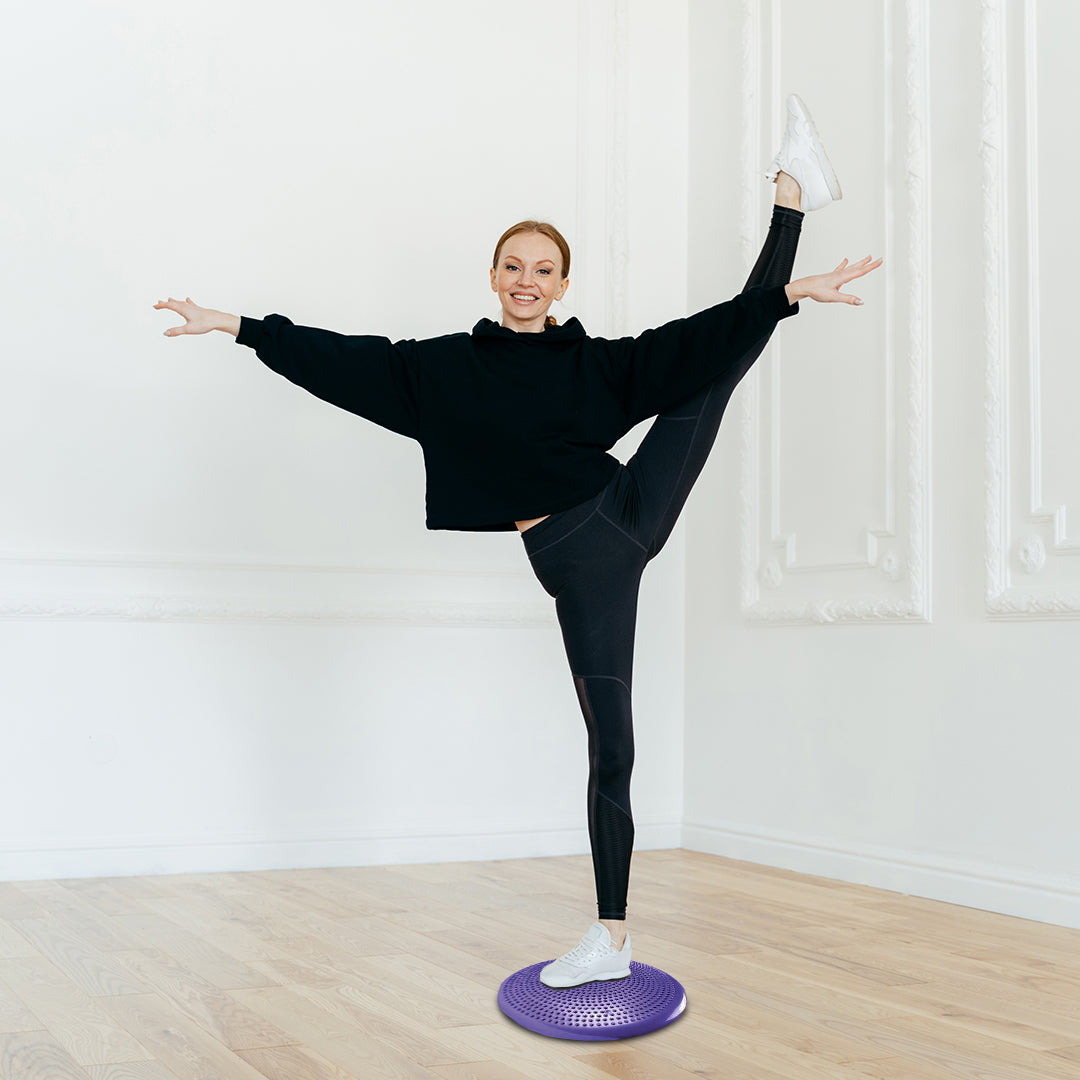How to Bounce Exercise Ball?
Exercise balls, Swiss balls, stability balls, or balance balls are good area units for increasing core strength and stability. It comes in a wide range of sizes, typically ranging from 45 to 85 cm. Most standard exercise balls have a weight limit of 250 pounds. We need to know how to bounce an exercise ball. Some could go up to three hundred pounds. If your weight exceeds a ball's weight limit, exploitation will cause safety risks as well as increase the likelihood of the ball detonating while in use.
How to Air up an Exercise Ball
Exercise or stability balls may be employed in a variety of ways to boost your posture. It's important that it's properly inflated. One that is not properly inflated may cause posture problems and will not help you exert yourself.By following the right techniques and using the correct instrumentation, you will be able to inflate and deflate your exercise ball properly.
- Let the ball sit at room temperature for two hours.
- Insert the tip of your ball pump into the hole in the ball.
- Pump the ball up 80% of the way.
- Pump the ball up to its full diameter.
- Insert the plug and let the ball sit for another day.
- Measure the final diameter of the ball.
- Sit on your inflated exercise ball.
- Bounce up and down slowly on your exercise ball.
- Sit on top of your ball with your legs spread.
- Remove the stopper and slowly bounce until the ball is deflated.
- Fold up your ball when you store it.
Fill the ball until it reaches the desired pressure, not to a specific pressure. First, fill it until it is slightly soft and smaller than the final size. Wait a day and finish inflating it to the size it should be. The ball can be used as a seat, a bench, or even as a weight. The right decision depends on what muscles you're trying to work.

Basic Tendencies of Inflating and Deflating an Exercise Ball
If you want to strengthen your core or improve your balance, strive for the victimization exercise ball. Exercise balls are a good investment to have available. Deflating the exercise ball is simple and may free up space in your workout space.
Deflating the Associate Degree Exercise Ball:
1) Find your exercise ball plug remover. This can be a plastic tool with two prongs on either side.
2) Slide the prongs of the plug remover around the plug of the exercise ball, with prongs on either aspect. This might be harder to bet on, however, the more inflated your ball is.
3) Squeeze the plug remover to grip the plug. Wiggle and pull up to get rid of the plug.
4) Push the exercise ball to get rid of the air. Some electrical air pumps have two-way action that permits air to be sucked out.
5) Place the ball plug into the ball, so it doesn't get misplaced. Fold the ball to store it.
If you have lost your ball plug remover, a coin, spoon, or flat-head screwdriver will all work as an appropriate replacement. A ball plug remover is recommended to prevent any potential harm to the exercise ball.
Inflating the Associate Degree Exercise Ball:
1) Take away the ball plug. Use a ball plug remover if required.
2) Use an associate's degree pump to inflate your ball.
3) If you're inflating your ball for the first time. The ball can expand to achieve its urged size. An electrical pump is usually recommended to use once you have inflated your ball for the first time.
After that, the most important thing that needs to be known is how to bounce on the exercise ball.
How firm should my fitness ball be?
- Check the fitness ball.
- Calculate the right distance.
- Fill the ball to 80% capacity.
- Prepare the ball for use.
Check out the fitness ball.
Take the fitness ball from the box and unfold it. Check the ball properly. And also, check the valves and caps.
Calculate the Right Distance
Don't inflate the fitness ball fully. The fabric ought to run a while to achieve its correct form and to stretch. Calculate eightieth of the diameter of your fitness ball, and this does not need to be correct right down to the centimeter. We have a 75 cm ball, so we tend to fill it to about sixty centimeters at first.
Use the measuring system to stand sixty centimeters from the wall.
Place the hold so that the fitness ball is sixty centimeters from the wall.
Fill the ball to 80% capacity.
You place the box at the proper distance, and you will begin filling the ball. Inflating the ball could be elbow grease in itself; reckon fifteen to twenty minutes of labor. Place the fitness ball between the wall and the box and begin pumping. If no pump is enclosed, you will use the pump for your mattress. Increase the pressure on the ball until it touches each wall and the box.
Close the ball by inserting the valve.

Prepare the ball for use.
You have to let the fitness ball stretch for twenty-four hours. You will be able to remove the duty—the total diameter of the fitness ball—from the wall and place the box. Take away the valve and inflate the ball to its full size. Replace the valve as it presently is because the ball hits each wall and, therefore, the box.
Can You Use a Bike Pump to Inflate an Exercise Ball?
A bike pump works like an exercise ball pump. It allows you to push air through a small low gap with minimal effort.Most bike pumps are manual. You physically pump the air into the tire. However, there are also electronic ones.
Though this might not be necessary once you have an associated exercise ball, it would be easier to fill a ball with an associated electronic pump. As a result, you have got to be ready to shut the pump off at the proper time.
You will use an associated bike pump to inflate an exercise ball.
How Does Bouncing on an Exercise Ball Help Strengthen Your Core?
Choosing the Right Size
- Your feet should rest flat on the floor when you sit on the ball.
- Your knees stay with your pelvis and will make a 90-degree angle when seated. Your thighs will be parallel to the floor.
- Your head, shoulders, and hips are all straight when you sit up straight.
Use the ball to do other moves that will give you a functional, healthy powerhouse.
Crunches Off The Ball: You need to put your low back on the ball, place your hands behind your head, and curl your upper body toward your thighs.
Back Extensions: Stay belly-first on the ball with your legs extended straight behind you. Place your hands by your ears and carry your chest up and away from the ball.
Bird Dogs: Place your abdomen on the ball and your hands and feet on the ground. Alternately extend the right arm and left leg to opposite sides of the area.
Side Crunches: Put your right hip and waist on a stability ball and prop your feet against a wall for balance. Place your hands behind your head and squeeze upwards to figure out the left aspect.
Suggestions for Using an Exercise Ball to Induce Labor
- Tilting back and forward
- Hip circles on the exercise ball
- Bounce away
- Figure eights
- Exercise ball squats.
increase abdominal and back muscle strength; and increase balance and stability. Develop overall management and strength of the core body muscles. The main advantage of the exercise ball is that it helps you exercise your pelvis, back, and abdomen muscles, usually referred to as your "core."
According to the above conversation, we have learned how to bounce on an exercise ball. Core exercises don't appear to be about getting a 6-pack or a flat stomach. A robust core is vital to strengthening and stabilizing your whole body.







